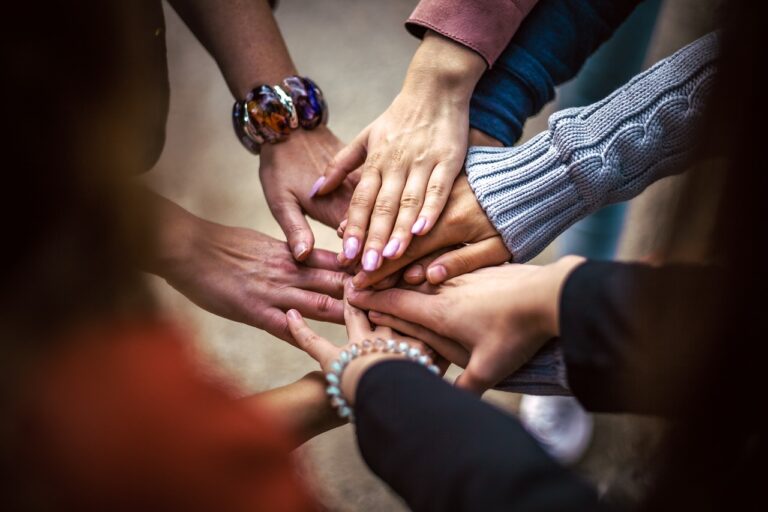A lack of a sense of community can leave anyone feeling isolated, even when surrounded by others. Even seeing others around you struggle with mental and physical health, abuse, and financial hardships can take its toll. A rising tide raises all ships, and that’s especially true when it comes to being a part of a community.
The more people struggle within a community, the more disconnected they will become. This can create a sense of isolation, which can worsen existing community problems. However, working together to advocate for one another can ensure better outcomes for everyone.
That’s especially true when social workers, counselors, and public health officials get on board. Follow along as we explore what it takes to create healthier minds and communities to ensure great outcomes.
Creating Positive Community Outcomes Starts From Within
Collaboration is the key to keeping any community happy, healthy, and safe. People can make a huge difference within their community when they come together, even if it takes a little outside help. That said, it’s important to prioritize a few key steps when helping strengthen a community, such as:
1. Provide Mental Health Resources
The stigma surrounding mental health holds many people back from seeking help. Similarly, many people simply don’t know enough about mental health. Social stigmas and a lack of resources can negatively impact individuals and communities dealing with mental health issues alike.
Stigmas typically exist because of ignorance, and it’s nobody’s fault. However, psychologists, counselors, and social workers have the chance to provide resources and change these stigmas. For example, school social workers and counselors can offer pamphlets, brochures, and workshops to educate the students about mental health.
That way, the students are less likely to hold their feelings in and more likely to seek help. It’s just as important to put such resources in community centers and public places that people of all ages attend. Today, you can even educate people about mental health via social media. Creating a widespread sense of understanding can fight stigmas and encourage people to get help.
2. Encourage Meaningful Connections
Connectivity is the difference between a community and a group of people bound by proximity. Creating a happy and healthy community is challenging if people don’t form meaningful connections. One of the most effective ways to foster such connections is to establish local groups and events.
This can include community cookouts, potlucks, and charity drives. It’s also important to create local groups centered around hobbies, sports, charity, and community development. The individuals may differ, but a common cause can show them they have more in common than they think.
Community events and groups can create long-lasting relationships and help people who feel isolated. Isolation can negatively impact individuals and eventually have a negative effect on the community. All it takes is a few people to take the first step and foster connections between their patients, peers, and neighbors.
3. Promote Harm Reduction and Fight Addiction
Addiction is a serious problem that grips many communities. It’s just as much a threat to mental health as it is to physical health. Today, psychologists and public health professionals can make a difference if they put their resources into addiction prevention and harm reduction.
For example, health education specialists can educate the community about the dangers of drug and alcohol abuse. This is one of many health education career paths, and it lets you see the difference you make in people’s lives. Health education specialists can educate children and adults alike, as addiction intervention is important at all ages.
Similarly, community members, psychologists, social workers, and local officials can help support addiction and harm reduction groups. Harm reduction is just as important as addiction prevention, as it can save people who currently indulge in dangerous activities. The more everyone understands the danger of addiction, the fewer people the community will lose to it.
4. Advocate for the Community
A lack of resources and programs can leave individuals and communities feeling neglected, and that’s rightfully so. That’s especially true in underserved communities facing social and economic problems. However, healthcare professionals, psychologists, and local politicians can make a difference if they support programs to better the community.
This includes financial aid, nutrition assistance, health clinics, mental health support, and prenatal care assistance. Sometimes, this entails joining a local committee to promote change from within. In other cases, you may need to bring the community together for a good cause to appeal to local officials.
Doing so can also promote a sense of unity and belonging, as everyone will have a hand in their community. By identifying and addressing problems within the community, you can push for long-lasting solutions. Such programs will exist beyond your time if the community rallies behind them.
5. Focus On the Youth
Psych degrees open the door to several career paths, and some of them let you help communities, starting with the youth. School psychologists help students struggling mentally, behaviorally, and academically. If left unchecked, each of these problems can keep the youth from enjoying happy, healthy lives.
Some youths simply need someone to listen to them, and school psychologists can provide that. They can also intervene in unhealthy situations regarding addiction, bullying, violence, and risky behavior. School psychologists can collaborate with parents, teachers, and administrators to help students and prepare them for the next step.
As mandated reporters, school psychologists must also intervene and report abusive, neglectful situations. This selfless career path can make a huge difference in someone’s life and help them become active, healthy community members.
Communication and Connectivity Are Key to Community Health
Whether it be opening a community center or holding workshops, the best way to create healthier minds is to bring people together. Connectivity can show people they aren’t alone and that their neighbors and peers care about their outcome. This sentiment is just as true for adults and senior citizens as it is for young students.
While healthcare professionals, psychologists, and educators can help, community members must also advocate for each other.
Photo Credit
Image by Bob Dmyt from Pixabay
Guest Author Bio
Sarah Daren
 With a Bachelor’s in Health Science along with an MBA, Sarah Daren has a wealth of knowledge within both the health and business sectors. Her expertise in scaling and identifying ways tech can improve the lives of others has led Sarah to be a consultant for a number of startup businesses, most prominently in the wellness industry, wearable technology and health education. She implements her health knowledge into every aspect of her life with a focus on making America a healthier and safer place for future generations to come.
With a Bachelor’s in Health Science along with an MBA, Sarah Daren has a wealth of knowledge within both the health and business sectors. Her expertise in scaling and identifying ways tech can improve the lives of others has led Sarah to be a consultant for a number of startup businesses, most prominently in the wellness industry, wearable technology and health education. She implements her health knowledge into every aspect of her life with a focus on making America a healthier and safer place for future generations to come.



Please Share Your Thoughts - Leave A Comment!